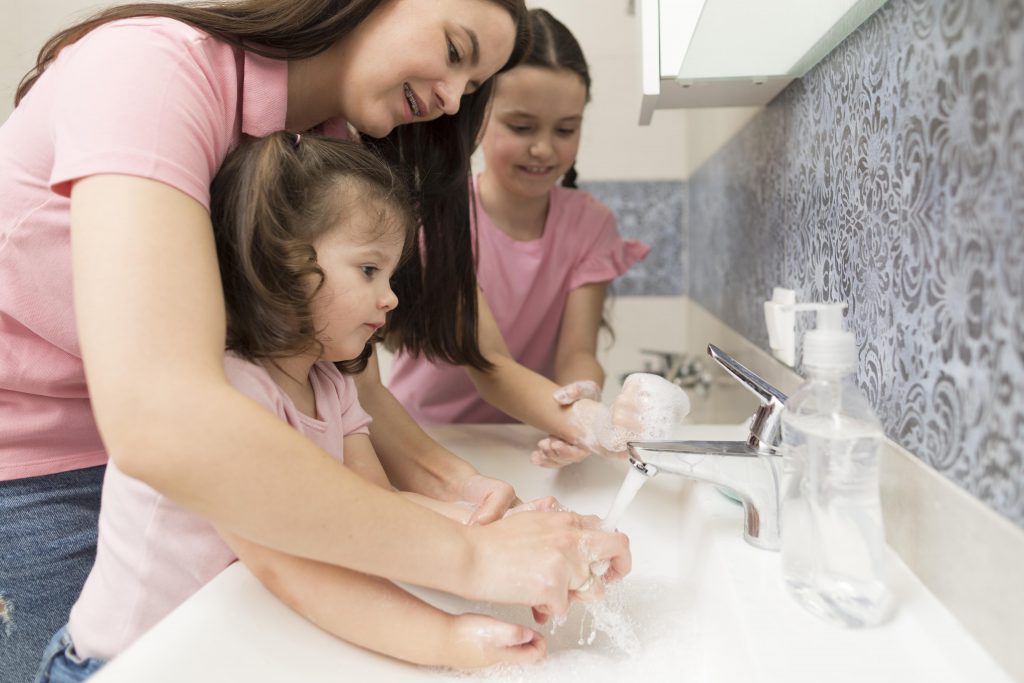
DID YOU know that hand, foot, and mouth disease (HFMD) cases are on the rise in the Philippines? According to a recent Department Circular issued by the Department of Health, more than 1,500 HFMD cases were recorded in the first 18 days of 2025—an almost 25 percent increase compared to the same period in the previous year. If you’re a parent or a caregiver, this surge is a legitimate cause for concern, as few things are more unsettling than seeing your child unwell, especially when the illness seems to spread rapidly among young children.
While some infections come and go with little concern, others may raise questions about how they spread, what symptoms to watch for, and how to care for a sick child. Understanding the facts about HFMD, including the importance of everyday hygiene practices, like using a good hand soap liquid formulation, can help parents feel more prepared. This guide provides practical information to help you navigate HFMD with confidence.
Understanding Hand, Foot, and Mouth Disease
Viruses are a common part of childhood, but some infections cause more concern than others. HFMD is one such illness, frequently affecting infants and young children. It is caused by enteroviruses, most commonly Coxsackievirus A16 and Enterovirus 71, which spread easily in places where young children gather, such as daycare centers, schools, and homes. While hand, foot, and mouth disease is usually mild, its rapid transmission and uncomfortable symptoms make it a challenge for parents and caregivers.
How HFMD Spreads
HFMD is highly contagious and spreads through direct contact with an infected person’s bodily fluids, including saliva, nasal secretions, and blister fluid. The virus can also be contracted from contaminated surfaces, such as toys, doorknobs, and utensils. Additionally, it can spread through fecal matter, particularly during diaper changes or when using shared bathroom facilities.
Children with HFMD are most contagious during the first few days of illness, even before the characteristic rash and sores appear. However, the virus can continue to shed in the stool for weeks after symptoms disappear, making hygiene precautions essential even after a child seems to have recovered.
Recognizing the signs and symptoms
Usually, the hand, foot, and mouth disease starts with symptoms that resemble a common cold or flu, making it easy to overlook in its early stages. A mild to moderate fever is usually the first sign, followed by a sore throat, irritability, and loss of appetite. Many children also feel fatigued or fussy, which can be mistaken for general discomfort due to teething or minor viral infections. However, within a day or two, the symptoms will progress, revealing the telltale signs of HFMD.
One of the most distinctive symptoms is the appearance of painful sores inside the mouth, particularly on the tongue, gums, and inner cheeks. These sores can make eating and drinking uncomfortable, leading to increased fussiness, drooling, or refusal to eat in younger children. Around the same time, a red rash or small blisters may develop on the hands, feet, and buttocks. The type of rash varies from child to child—some may have just a few spots, while others develop more noticeable blisters.
Because HFMD shares symptoms with other childhood illnesses, it’s important to distinguish it from similar conditions. For instance, chickenpox causes an itchy rash that spreads across the entire body, while measles produces a high fever followed by a widespread, blotchy red rash. Another illness, herpangina, also leads to mouth ulcers, but it does not cause the characteristic hand and foot rash seen in HFMD.
Most cases of HFMD resolve within seven to ten days, with symptoms gradually improving as the body fights off the virus. However, it’s important to watch for signs of complications, such as dehydration, difficulty swallowing, or a persistent high fever, as these may require medical attention.
Managing and Treating HFMD
There is no specific cure for hand, foot, and mouth disease, but supportive care can help ease symptoms and make recovery more comfortable. Most cases resolve on their own within ten days, so treatment focuses on relieving pain, preventing dehydration, and ensuring proper rest.
To manage and treat HFMD, consider the following:
- Use acetaminophen or ibuprofen (as directed by a doctor) to reduce fever and discomfort.
- Encourage plenty of fluids—cold water, milk, or electrolyte solutions—to prevent dehydration.
- Avoid acidic or spicy foods that may irritate mouth sores.
- Offer soft foods and use a mild saltwater rinse for older children to ease discomfort, particularly avoiding alcohol-based mouthwashes.
- Keep the skin clean and avoid popping blisters, as this can increase infection risk.
- Keep your child at home until symptoms subside to prevent spreading the virus.
Preventing HFMD
While there’s no vaccine for HFMD, taking simple precautions can significantly reduce the risk of infection. Here are practical hygiene practices you can follow:
- Teach children to wash their hands with antibacterial soap and water for at least 20 seconds, especially after using the restroom or playing with toys.
- Regularly clean toys, doorknobs, tables, and other high-touch areas with a disinfectant cleaner to eliminate lingering viruses.
- Encourage children to use a tissue or the crook of their elbow to cover coughs and sneezes to prevent spreading germs.
- Do not share utensils, cups, food, towels, or toothbrushes to limit exposure.
- Immediately discard used tissues and soiled diapers in a covered trash bin to minimize contamination.
Hand, foot, and mouth disease is a common childhood disease that, while uncomfortable, is often mild and manageable at home. Use this guide to understand what it is, how to address it, and how to reduce the risk of infection. With the right knowledge and preparation, you can take control and protect your child—rather than letting uncertainty overwhelm you.
